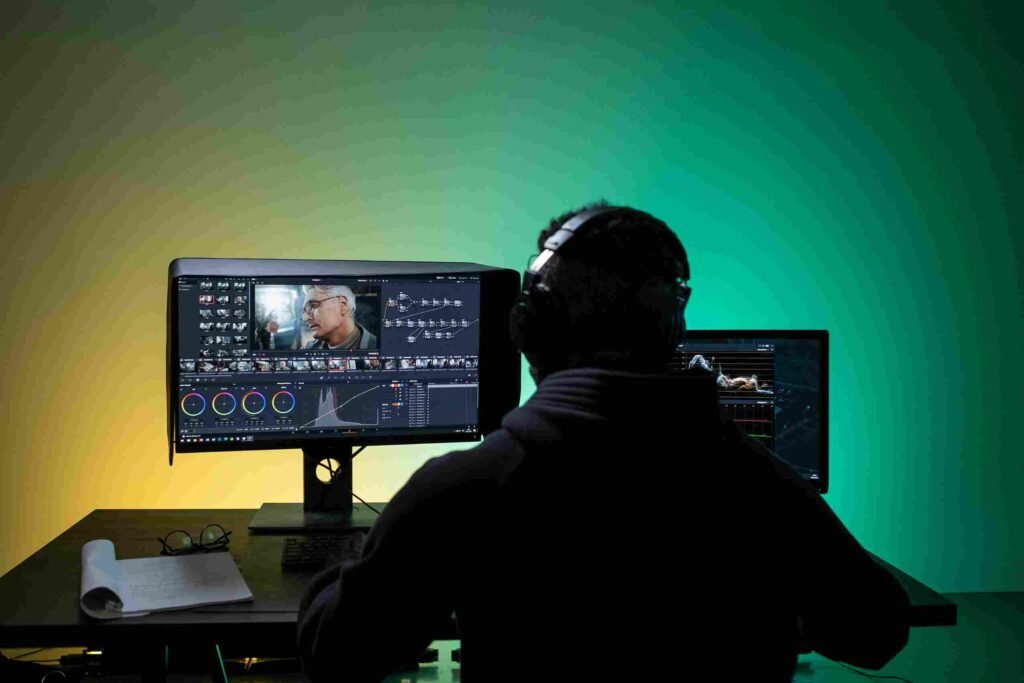Difference Between Animation and Video Editing: A Comprehensive Guide
Animation and video editing are two such key aspects in the dynamic world of multimedia content creation. While they are both part of the creation of today’s visual media, they serve different purposes and use different techniques and skill sets. Understanding the difference between animation and video editing will help you choose the best approach for your project-whatever it may be-from creating a marketing video to producing a short film or a social media post.
With this blog post, we will be looking at the fundamental differences between animation and video editing, the duties of an animator and video editor, and the tools and techniques used in each field. After reading this article, you should have a sharper grasp of how animation differs from video editing and when to use these two methods.
What is Animation?
Animation is the act of making moving pictures by manipulating objects or drawings that are static. In other words, it brings characters, scenes, and objects to life by rapidly displaying individual frames in succession. Through rapid succession, these frames create the illusion of motion, like a flipbook.
There are various forms of animation, each with its unique style and methodology. Here are the most common types of animation that include:
- 2D Animation: Moving things made with the very 2-dimensional world of mankind include human, animal and object elements. Conventional 2D animation is hand-drawn, while this digital 2D animation is created and manipulated for performance by image software.
- 3D animation: It is considered the creation of images using special software in a three-dimensional space for another object and aperture. The field generally applies to movies, video games, and commercials, to create realistic and dynamic imagery.
- Stop-Motion Animation: A stop-motion animation is the procedure where real-world objects (e.g., clay figures or puppets) are manipulated and then each movement is filmed in a frame-by-frame manner whereby the objects appear to move in sequence when played back.
- Motion graphics: These animations mainly deal with graphical components, i.e. text, shapes, and symbols. These are generally used in corporate films, promotional work, and explainer videos.
Adobe Animate, Blender, Toon Boom, and Cinema 4D serve as tools for animators for creating their animation. Animation is meant to tell stories, feelings, or ideas through visual movement. It is generally found in films, television shows, advertisements, video games, and even educational content.
What is Video Editing?
Video editing is where the recorded material is manipulated and sequenced into a final product: a finished, cohesive cut of film. This entails trimming, splicing, putting together, and modifying clips to improve and elaborate upon narrative, pacing, and flow. Using these tools, the video editor strives to make footage more effective, add special effects, grade colors, and put sound design elements into it.
An apt definition for video editing would be creating short and long videos, from YouTube content to features. In animation, something new is created, whereas in video editing, existing footage is manipulated. Video editors assemble a narrative or message: judging off their selection and handling of their constituents, such as raw video footage, audio, and graphic assets.
Key Aspects of Video Editing
Cutting and trimming: The editor is removing unwanted portions of footage while trimming clips to length as required.
Color Grading: This would set colors, contrasts, and brightness of footage to reflect some mood or atmosphere.
Special Effects: Putting in visual effects, transitions, and motion graphics to the video for an added appeal.
Sound Editing: Syncing background audio with video and leveling sound effects and background music.
Titles and Text: Insertion of overlays, titles, and credits on the video.
Thanks to video-editing software applications like Adobe Premiere Pro, Final Cut Pro, DaVinci Resolve, and Sony Vegas Pro, editors are given a full suite of functions to rehabilitate video footage and realize their creative vision.
Key Differences Between Animation and Video Editing
While animation and video editing both deal with the creation and manipulation of visual content, several distinctions mark them apart. Let’s find out which ones:
1. Purpose and Application
- Animation: Animated objects, characters, or drawings refer to computer graphic illusions wherein the objects, characters, or illustrations are modeled to appear as if they were moving or alive. Presently, they stand as one of the biggest tools for the creation of fiction and nonfiction for audiences of all ages.
- Video Editing: Video editing is about shaping pre-recorded footage to create a final piece of content. Editors work with existing video clips, soundtracks, and other media to tell a cohesive story or convey information. Video editing is commonly used in the production of movies, television shows, advertisements, YouTube videos, and corporate videos.
2. Tools and Techniques
- Animation: Animators work with software such as Adobe Animate, Blender, Toon Boom, and Cinema 4D to design 2D and 3D objects and animate them. The process involves drawing, modeling, rigging, and keyframing to develop the graphics.
- Video Editing: Video editors use video editing software, such as Adobe Premiere Pro, Final Cut Pro, and DaVinci Resolve, to cut, trim, and arrange clips, as well as add effects, transitions, and sound design elements, so their work is enhanced visually.
3. Workflow and Process
- Animation: Animation usually takes a longer and more complex approach. It starts with the concept design, and is followed by storyboarding, modeling, rigging, and finally animating the characters or objects. This means that every frame or every single sequence has to be created manually from scratch.
- Video Editing: It actually begins with the shooting or acquisition of footage. Editors then work on raw footage and audio recordings to bring them all together into the final video. The editors then proceed to cut off all unnecessary video content, slow down or fasten the pace, add effects, and have their final touches on the presentation of the video.
4. Creative Control
- Animation: In animation, every single detail moves with total creative force; that’s right down to the movement of the characters. Where they play, and the very things that they play against. By total creation without anything stopping, it allows the animators to storyboard characters and worlds and their stories from the very beginning.
- Video Editing: In Video Editing, an editor has unlimited power concerning how the footage must be joined or cut and presented; He has all but the footage itself. Video editors can modify the pace, structure, and appearance of the video, but they cannot develop entirely original visuals from scratch unless using animation or motion graphics.
5. Time and Effort
- Animation: A vivid animation is incredibly time-consuming and labor-intensive. Creating even 2D or 3D detailed animations may consume a significant period depending on the complexity of the scenes and the number of frames involved.
- Video Editing: Video editing requires a lot of time, but it has not been as labor-intensive generally like animation. The editing would depend on how much footage and complexity of edits, but generally the editing would take less time than making animations from scratch.
When to Use Animation vs. Video Editing
Choosing between video editing and animation will largely depend on the message you want to convey. The goals of your project are crucial to selecting the best approach.
Make Use of Animation: When communication involves abstract concepts or fanciful tales, animation can offer an explanatory avenue, introducing characters or environments that do not exist in this reality. Animation is best suited for explainer videos, advertisements, children’s content, and entertainment.
The Art of Video Editing: Video editing is the tool that can create real-world footage and tell a story with existing clips. It excels in documentary-making, vlogging, corporate projects, music-video production; pretty much any project that involves recorded video footage.
Conclusion
Animation and video editing are as different as their purposes are distinct, meaning that animation is for creating moving images from scratch, while video editing is the cutting, chopping, splicing, and pasting of footage to end up with a single final cut. These differences and some strengths would guide you in deciding where to head for a particular project. If wild dreams need to be animated, or if video needs to be torn apart via editing, they both play parts in today’s world of content creation.



